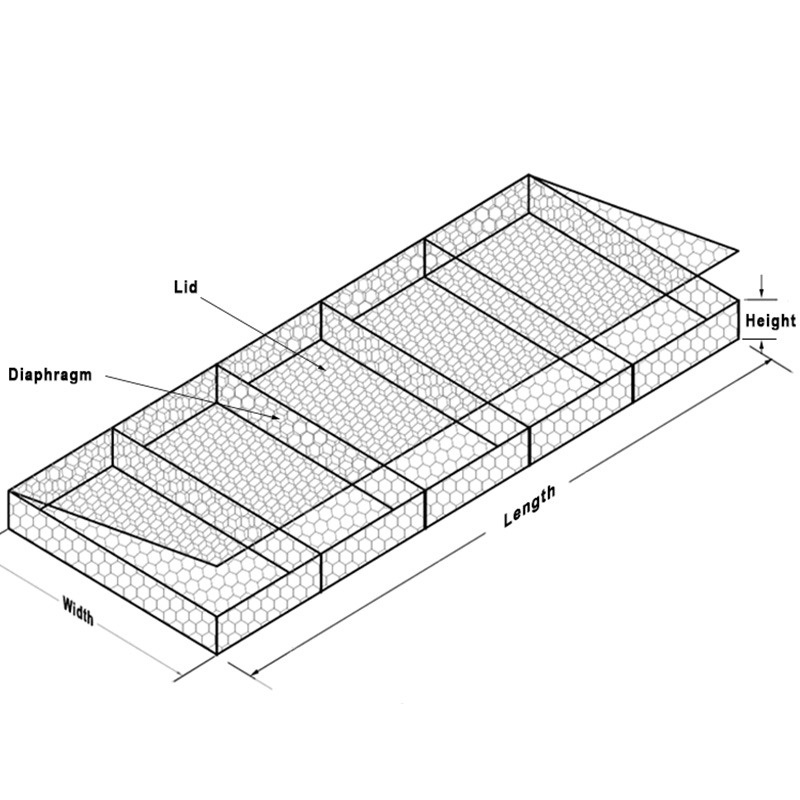ديسمبر . 21, 2024 20:43 Back to list
best gabion wall engineering
Best Gabion Wall Engineering A Comprehensive Guide
Gabion walls have emerged as a popular solution for both landscaping and structural engineering applications. Made from large wire mesh baskets filled with rocks, stones, or other materials, Gabion walls offer numerous advantages, including aesthetic appeal, environmental benefits, and structural integrity. This article will delve into the best practices for Gabion wall engineering, highlighting key considerations that ensure optimal performance and longevity.
1. Understanding Gabion Walls
Gabion walls consist of wire mesh containers, also known as gabions, that are filled with stones. These walls can serve various purposes, from erosion control and flood protection to decorative landscaping features. The flexibility and permeability of Gabion walls allow them to adapt to changing land conditions, making them a preferred choice for engineers and architects alike.
2. Advantages of Gabion Walls
The use of Gabion walls presents multiple benefits
- Erosion Control Gabions are particularly effective in managing soil erosion on slopes and riverbanks. Their permeability allows water to pass through, reducing pressure behind the wall and minimizing washout. - Eco-friendly Options Gabion walls can incorporate local materials, making them more sustainable. They can also host vegetation, supporting local biodiversity.
- Aesthetic Versatility Available in various sizes and shapes, Gabion walls can be designed to complement natural landscapes or constructed for functional requirements.
- Cost-effective Solutions Compared to traditional concrete walls, Gabion walls can be more economical, especially in remote areas where sourcing heavy materials might be challenging.
3. Design Considerations
To achieve the best results in Gabion wall engineering, attention must be paid to several design parameters
- Site Assessment Conduct a thorough evaluation of the site conditions, including soil type, drainage patterns, and potential water flow
. This ensures the Gabion wall is designed to withstand local environmental stresses.- Material Selection Choosing appropriate materials for the wire mesh and infill is critical. The wire mesh should be galvanized or coated to prevent corrosion, while the infill should consist of durable, non-reactive stones that won't degrade over time.
best gabion wall engineering

- Wall Dimensions Gabion walls need to be engineered with proper dimensions based on the anticipated loads and environmental conditions. The height, width, and thickness of the wall will determine its stability and effectiveness.
4. Construction Techniques
Proper construction techniques are vital for the success of Gabion walls
- Foundation Preparation A solid foundation is crucial. Clear the construction area of vegetation, rocks, and loose soil. Excavate as necessary and prepare a stable base typically using compacted gravel.
- Assembly of Gabions Gabions should be filled layer by layer, ensuring that the stones are placed in a manner that prevents movement. Heavier stones should be placed on the outer corners for added stability.
- Backfilling Once the Gabion baskets are filled and stacked, backfill the area behind the wall with appropriate materials to provide additional support and to encourage drainage.
5. Maintenance Considerations
While Gabion walls have relatively low maintenance requirements, a few practices can enhance their longevity
- Regular Inspections Periodically inspect the walls for any signs of deformation, displacement, or vegetation overgrowth that could compromise structural integrity.
- Weed Control Managing vegetation around and on the Gabion walls can prevent root systems from exerting undue pressure and degrading the structure.
- Repair Damage Promptly Address any damage, such as broken wires or displaced stones, as soon as possible to prevent deterioration.
Conclusion
Gabion wall engineering combines functionality with aesthetic design, making it an excellent choice for various applications. By adhering to best practices in site assessment, material selection, construction, and maintenance, engineers can ensure that Gabion walls are both resilient and visually appealing. With the right planning and execution, these structures will not only stand the test of time but also contribute positively to the surrounding environment.
-
Understanding Load-Bearing Capacity of Gabion Boxes
NewsJul.17,2025
-
The Importance of Corrosion-Resistant Wire in Gabion Construction
NewsJul.17,2025
-
How Gabion Boxes Prevent Soil Erosion Effectively
NewsJul.17,2025
-
Environmental Benefits of Gabion Cages
NewsJul.17,2025
-
Best Stone Types for Gabion Walls with Steps
NewsJul.17,2025
-
Benefits of Using Rock Gabion Baskets in Landscaping
NewsJul.17,2025
-
The Role of Galvanized Gabion Mesh in Riverbank Protection
NewsJun.26,2025






